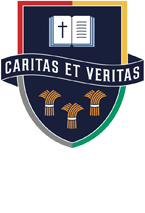Dance
Great dancers are not great because of their technique, they are great because of their passion."
Martha Graham
Intent
Dance is a powerful and empowering form of non-verbal communication that challenges conceptions of intelligence and it can enrich the culture of the students by cultivating collaboration, respect and compassion.
Dance develops creative, imaginative, physical, emotional and intellectual capacities. The Dance department is determined to provide a challenging, engaging Dance education that strives to support students to achieve their personal best and encourages students to create, question and learn through Dance.
Our ambition is for students to leave with an appreciation for creativity, built on a strong foundation of practical experience that enables them to apply their knowledge and skills in any job role.
Design Rationale
The Dance curriculum is designed to expand a student’s creativity through knowledge of dance as an art form, practise of performance, creation of choreography and cultural appreciation of professional dance works.
Our curriculum allows students to develop their understanding of the performing arts by examining practitioners’ work and the processes used to create performance. Students will broaden their knowledge through observing existing repertoire and by learning about the approaches of practitioners and how they create and influence performance material.
Students will consolidate their performing arts skills and techniques through the reproduction of dance repertoire. They will take part in workshops and classes where they will develop technical, practical and interpretative skills through the rehearsal and performance process. Throughout students’ development, they will review their own progress and consider how to make improvements.
Students will end the course by responding to a set brief where they will showcase the skills and knowledge they have developed during the course. This will allow students to carry out the development of creative ideas and rehearsal for a workshop performance.
Delivery
From sunrise to sunset, when you are a dancer at Hartford Church of England High School, you live a pretty interesting school life. Arriving promptly to class dressed in black, the studio is filled quickly with silhouette figures who want to swap written words for the language of the body. When each dancer steps into this prestigious space, they transform into professional performers eager to shine under the spotlight - expressing their own identity and how they wish to be understood.
When the music starts, students switch off from the pressure of a formal classroom structure and lose themselves in the movements, eager to be empowered, determined and dedicated to the practise and performance of dance. Whether they are participating in a repertoire workshop or a style inspired class, students are provided with demonstrations and modelling to give them the drive to explore professional choreographers, skills, techniques and productions. Whether it is the African beat from the Lion King Musical or the haunting sounds from Ghost Dances, students are taken to a place where their imagination and creativity can explode.
Working as part of an ensemble they are given the opportunity to have an identity and feel part of a team, where ideas are shared and choreographic processes dissected. Working independently, students are able to review and improve their physical and interpretative skills and the day-to-day expectations of becoming a professional dancer, whilst being supported within the safest and most motivating environment. Students’ knowledge is retained and rehearsed through do now tasks. Video analysis frameworks and peer assessment activities embed the importance of rehearsal, target setting and enable students to become the most disciplined dancers they can be.
Impact
To track progress, we follow a three-layered assessment structure.
High Stake Testing
High quality summative assessments (twice or three times a year) interleave knowledge and skills to support students in developing long-term memory. Stand-alone lessons ensure that students reflect and respond to teacher feedback.
Mid Stake Testing
Typically purposeful practice tasks completed independently in lessons at least twice per half-term. These tasks are used to identify learning gaps prior to high stake testing. Students receive personalised written feedback to which they respond in lessons.
Low Stake Testing
To embed knowledge in long-term memory, every lesson starts with students quizzed on prior knowledge (Do Now Tasks). Student performance is then used effectively by teachers to identify misconceptions and plan accordingly to narrow knowledge gaps.
Knowledge Organisers
-
Year 10 Dance - A Linha Curva Knowledge Organiser
download_for_offline
download_for_offlineYear 10 Dance - A Linha Curva Knowledge Organiser
-
Year 10 Dance - Artificial Things Knowledge Organiser
download_for_offline
download_for_offlineYear 10 Dance - Artificial Things Knowledge Organiser
-
Year 10 Dance - EofE Knowledge Organiser
download_for_offline
download_for_offlineYear 10 Dance - EofE Knowledge Organiser
-
Year 10 Dance - Infra Knowledge Organiser
download_for_offline
download_for_offlineYear 10 Dance - Infra Knowledge Organiser
-
Year 10 Dance - Shadows Knowledge Organiser
download_for_offline
download_for_offlineYear 10 Dance - Shadows Knowledge Organiser
-
Year 10 Dance - Within Her Eyes Knowledge Organiser
download_for_offline
download_for_offlineYear 10 Dance - Within Her Eyes Knowledge Organiser
-
Year 11 Dance - Anthology Knowledge Organiser
download_for_offline
download_for_offlineYear 11 Dance - Anthology Knowledge Organiser
-
Year 11 Dance - Choreography Knowledge Organiser
download_for_offline
download_for_offlineYear 11 Dance - Choreography Knowledge Organiser
-
Year 11 Dance - Exam Knowledge Organiser
download_for_offline
download_for_offlineYear 11 Dance - Exam Knowledge Organiser
-
Year 11 Dance - Performance Knowledge Organiser
download_for_offline
download_for_offlineYear 11 Dance - Performance Knowledge Organiser

